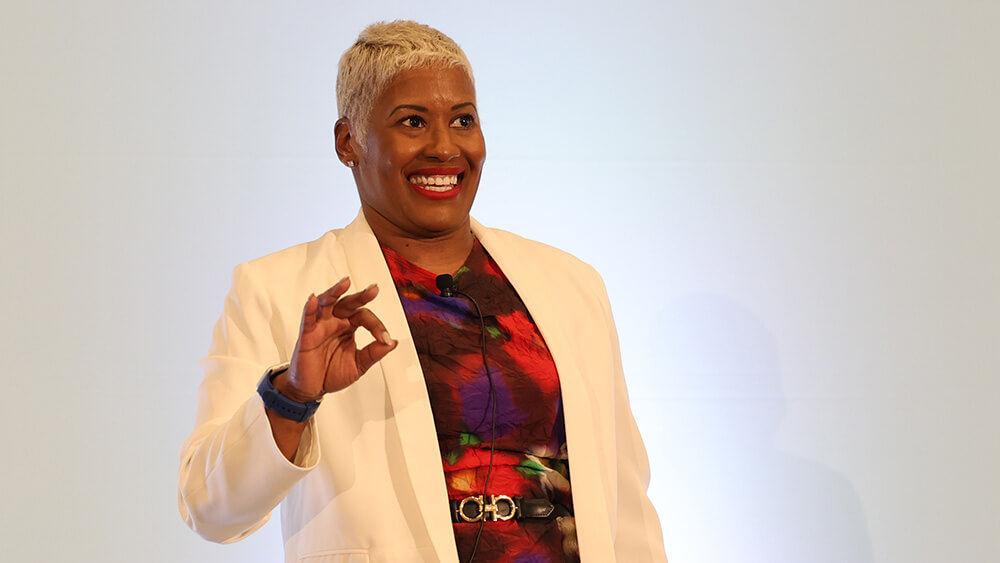
In difficult conversations, it’s important to not make assumptions about how the other person feels based on their tone, inflections, or body language, said Sherron Washington, marketing and communication strategist and professor at Trinity University and Stevenson University. (Whatever Media Group)
Even before the pandemic, event organizers showed up on lists of the most stressful jobs in the world. In today’s events landscape, difficult conversations — about narrowing budgets, inflation, logistics, inadequate staffing, and other challenges with stakeholders, vendors, colleagues, and employers — are all in a day’s work.
In a Convening Leaders 2024 session, “The Art of Difficult Conversations: Role Playing & Communication Tactics to Navigate Challenging Situations,” Sherron Washington, marketing and communication strategist and professor at Trinity University and Stevenson University, shared her wisdom on how to navigate these discussions with tact. And that often starts with inner work.
“It is not about getting it off your chest, it is not about being right,” Washington said, “but rather, getting to a resolution.”
Here are Washington’s top tips for reducing tension and seeking solutions in difficult conversations:
- Support your perspective instead of validating your rightness. “When you’re trying to validate your rightness, that means that you’re telling the other person, ‘I need your permission to move forward in what I already believe is right,’” Washington said. Instead, she suggested presenting a strong case for your perspective that does not dictate how the other person should receive the information. This creates a calm environment for the conversation to continue.
- Agree to disagree — without being disagreeable. “Many of you have used that term, ‘I agree to disagree,’” Washington said, “but you don’t really agree, because you’re mad.” She recommended practicing this by accepting other perspectives without trying to change the other person’s mind. Washington teaches understanding over acceptance — being sympathetically aware and tolerant of others’ feelings, even when in disagreement. “As you practice your own understanding, your communication changes — therefore [the other person’s] communication with you will change,” she said.
- Focus on the result, not the other individual’s communication. In difficult conversations, Washington said, it’s important to avoid make assumptions about how the other person feels based on their tone, inflections, or body language. “You don’t know this person — they could be highly expressive,” she said. “When I’m passionate about something, I am raised to the roof. It doesn’t mean I’m angry.” Instead of focusing on how someone comes across physically, she said, try to maintain focus on the outcome of the conversation.
- Be mindful of your own communication style. “I know some of you are [writing], ‘Per my last email,’” she joked, referringe to the common passive-aggressive email response. “When you receive that, how do you feel?” Sometimes, our own communications create needless conflict and tension. “I have to first be aware — and have not just awareness, but control — of how I am communicating,” Washington said, in order to create a better experience for everyone involved, including yourself.
The full recording of this session is available on PCMA+ for all in-person attendees until March 11.
Casey Gale is managing editor of Convene.
